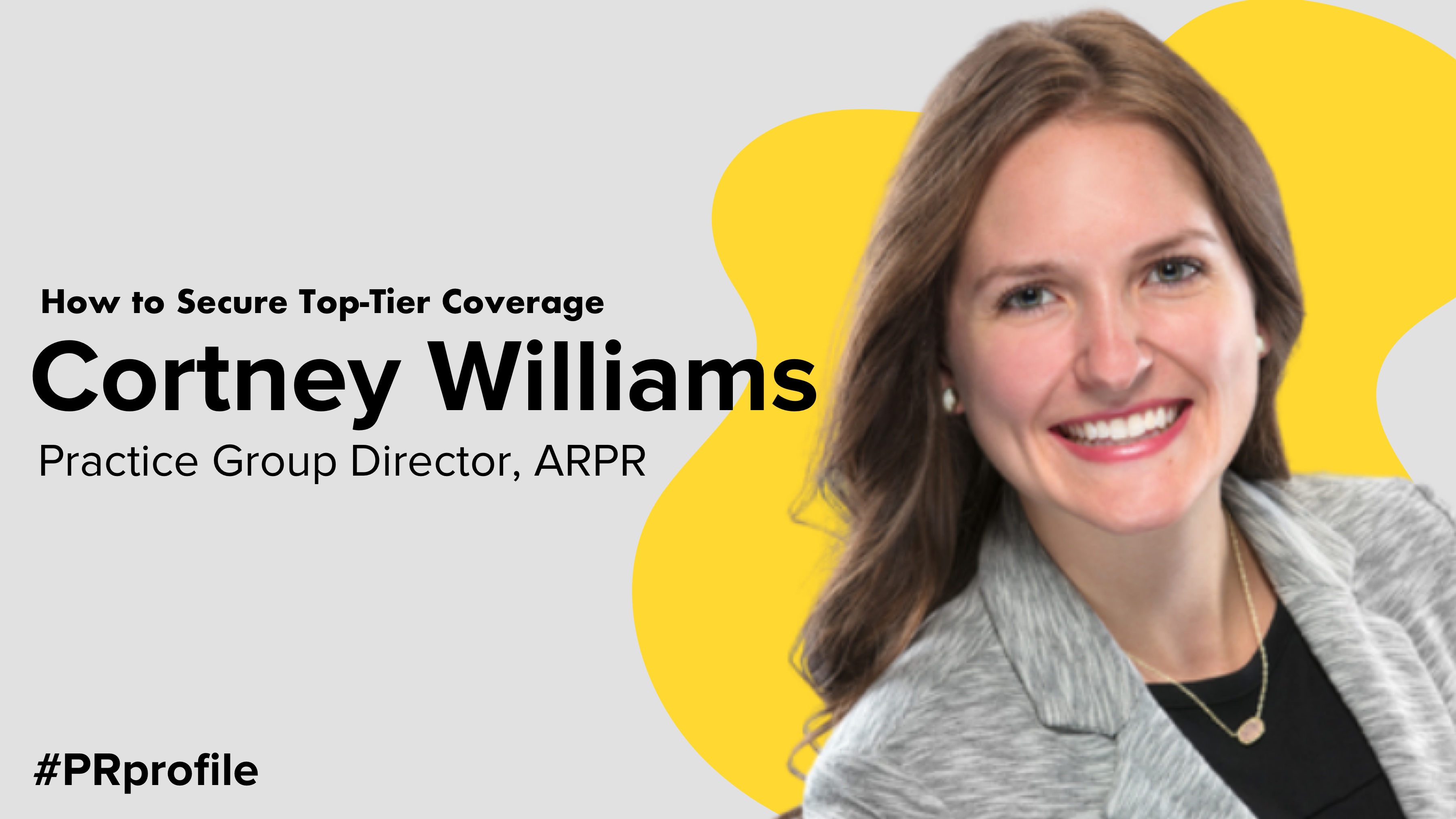How to Secure Top-Tier Coverage with Cortney Williams, ARPR

On this month’s profile, we are talking with Cortney Williams, a Practice Group Director at ARPR. She's been working in PR/communications for over 10 years and has experience servicing B2B and B2C clients of all sizes and in almost every industry.
Today, she currently serves as ARPR’s HealthIT Practice Group Director, overseeing the management and strategy of her agency’s robust – and growing – healthcare technology client roster. While her role has shifted over the last couple of years, her true PR passion remains media relations, strategizing with her team and clients to land strategic placements that drive results.
Within this interview, we break down real examples of how she landed top-tier coverage, what worked, and her tips for replicating it for your own pitches. Read below for the entire interview with Cortney Williams:
1.) Tell us a bit about your current role, what a typical day looks like, and who your clients are.
2.) What's the best pitch of yours that resulted in coverage and what elements made it successful?
I love this question! There are a few that stand out, but what’s top of mind is a pitch from 2020 that was a result of a survey we conducted for a healthIT client all about patients and telehealth – what consumers like about telehealth, if they wanted their healthcare provider to utilize telehealth moving forward, etc.
The pitch was no doubt timely, since it was during the height of the pandemic, but it was also educational and inspirational. At large, we really wanted to speak to the entire industry and say hey, we know telehealth has risen to the spotlight during the pandemic for obvious reasons – but it’s here to stay, so we must figure out the regulations and reimbursement landscape around this so providers can continue to bill (and get paid) for it moving forward. Plus, it's not just healthcare providers that recognize the value and benefit of telehealth – patients do, too. We generated a mass amount of coverage on this survey, but a few of the top national publications to cover it were HuffPost and U.S. News & World Report.
3.) What makes a good subject line? Can you share an example of one that worked?
4.) What information do you always make sure to include in your pitch?
5.) One of your campaigns for iCAD titled, “Nothing Artificial About It: Launching the World’s First AI Mammography Solution,” won the Holmes Report Sabre Award for MedTech Campaign of the Year. Can you tell us a bit about this campaign and what made it most successful?
This was truly an amazing campaign to get to work on, as breast cancer (unfortunately) affects all of us in one way or another. Essentially, our team was supporting the client in launching its artificial intelligence-based solution for digital breast tomosynthesis.
While the tool was one of the first and was without a doubt critical to cancer detection and prevention, the industry overall is oversaturated, which meant we had to be extremely creative in the way we told the launch story to successfully break through the clutter. With a strategic approach – from utilizing KOLs with diverse backgrounds and experiences, to targeting patients to better educate them on breast health – we were able to not only generate a healthy stream of media coverage, but also increase traffic to the client’s website and boost conversions, thus turning prospects into identifiable sales leads. And this is a perfect example of why I love working in healthcare technology – the work some of our clients are doing is truly life-changing!
6.) What's your best tip for measuring PR? What's the most valuable KPI to track in your opinion and why?
Share of Voice remains critical and is a core priority for many of our clients. But what’s truly unique about ARPR is that we execute integrated campaigns that blend traditional PR tactics with compelling content and contemporary digital marketing. We tend to think beyond an earned media hit, looking at things like: did a prospect see us in a headline and click through to the website, then complete a contact us form? Did a client see a social media post about a new product launch, thus read the full press release and ask for a product demo?
For us, it’s really about how everything is working together – from traditional PR to social media and email marketing – to make an overall impact on the bottom line.
7.) How do you utilize social media/marketing to amplify your PR results?
8.) We read that you are a strong B2B health writer and storyteller. How has your strength in writing helped propel your career? What tips do you have for those trying to enhance their writing ability?
9.) What’s your #1 tactic for building relationships with journalists?
10.) What’s the best PR advice you’ve received or given to others?
________
Want to learn more tips for pitching top-tier contacts and landing coverage? View our podcast, Coffee with a Journalist, which interviews top reporters, editors, and journalists who talk about their best pitch tips they want PR professionals to know.
Like this series and have a guest you think would be a good fit? Shoot us a Twitter DM or email us at info@onepitch.co and let us know who you’d want to see featured next! PS: you can recommend yourself too.
Want more blogs like this?
Fill out the form below to subscribe to our newsletter and receive weekly emails with the top blogs from The TypeBar!
